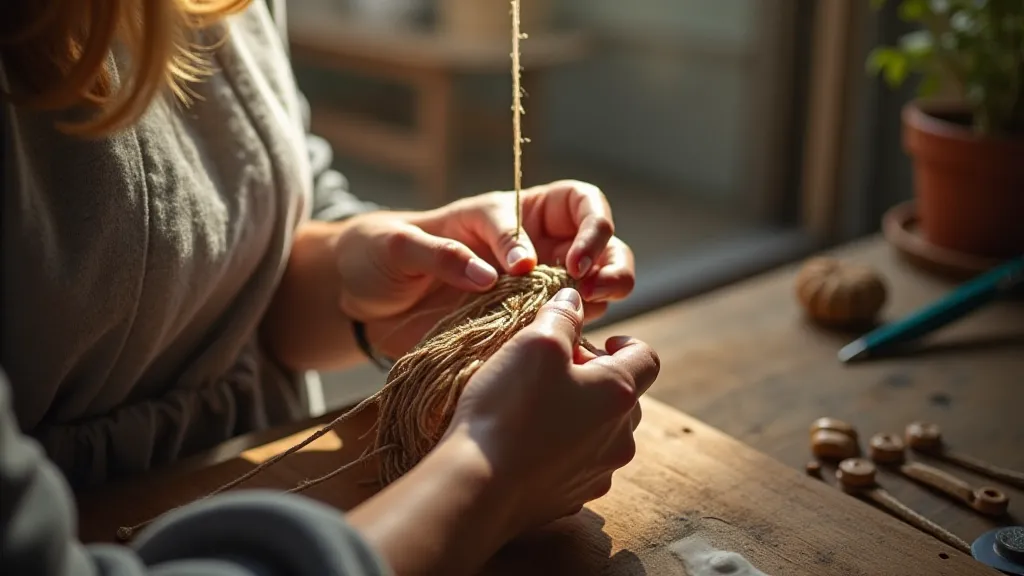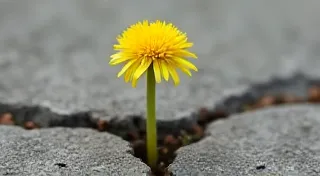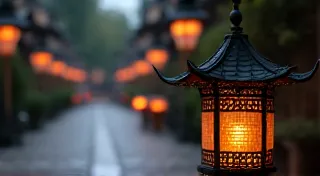The Cord as Narrative: Kumihimo and the Art of Storytelling
There's a quiet magic held within the coils of Kumihimo. It’s a magic that extends beyond the intricate beauty of the braids themselves, reaching into the depths of Japanese history and hinting at a tradition of subtle, almost secret communication. When I first encountered a collection of antique Kumihimo cords in a dusty antique shop, the feeling wasn’t one of merely admiring a craft; it was akin to discovering fragments of untold stories, whispered down through generations.
The cords themselves were remarkable. Faded reds bled into deep indigos, gold threads shimmered faintly beneath layers of wear, and the precise, unwavering geometry of the braids spoke of painstaking dedication. Each cord seemed to hum with a forgotten rhythm. I imagined the hands that crafted them – calloused, skilled, and perhaps, quietly conveying messages through the very patterns they created.
Kumihimo braiding, literally "gathered threads," is a Japanese textile art form with roots that stretch back centuries. While the precise origins remain somewhat shrouded in legend, evidence suggests its practice began as early as the 7th century AD, coinciding with the introduction of silk from China. Initially, Kumihimo was integral to the creation of samurai armor, belts, and priestly vestments. The incredibly strong braids, woven with silk, linen, and later cotton, served practical purposes far beyond mere decoration.
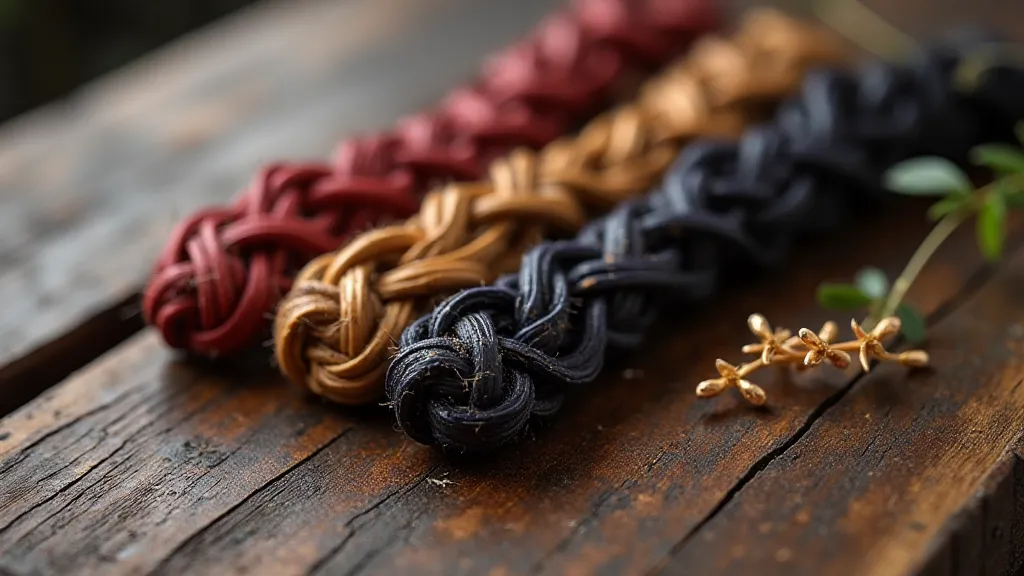
Beyond Function: The Rise of Symbolic Language
As the samurai class evolved and the role of Kumihimo expanded beyond purely functional uses, something extraordinary began to happen. The rigid, almost mathematical nature of the braiding process lent itself to a unique form of expression. It's tempting to believe – and I believe there’s significant anecdotal and circumstantial evidence to support this – that skilled artisans began to encode subtle variations in pattern, color, and thread combination to convey narratives. Think of it as the medieval equivalent of a coded language, woven directly into the fabric of the braid.
Imagine a family history interwoven into a single cord: a repeating sequence of red and gold threads representing prosperity and lineage, interspersed with a subtle variation in the pattern signifying a period of hardship overcome. Or perhaps a cord commissioned for a wedding, where the choice of colors and the complexity of the braid represented the couple's virtues and their hopes for the future. These aren't mere embellishments; they are visual poems, silent testimonials to lives lived and stories told.
The interpretation of these ‘hidden meanings’ is, of course, incredibly challenging. Without documented keys or explicit explanations from the original artisans, much of it remains speculative. However, the sheer precision and artistry involved suggest a purpose beyond simple aesthetics. The discipline required to consistently execute complex braids hints at a deeper significance, a responsibility to preserve and transmit something vital.
The Maruhashi Collection and the Echoes of the Past
The Maruhashi Collection in Tokyo provides an invaluable window into the world of historical Kumihimo. It holds an astonishing array of antique cords, many of which were likely commissioned for ceremonial purposes or personal adornment. Examining these artifacts, one can’t help but ponder the silent stories they hold. The craftsmanship is breathtaking; the uniformity of the braids is testament to rigorous training and an unwavering commitment to perfection.
Certain recurring patterns have sparked considerable speculation. For example, the frequent use of specific color combinations – like indigo and silver – has been linked to Shinto rituals and notions of purity. The presence of certain knot sequences – while seemingly random – might have held symbolic meanings related to family crests or regional customs. Unlocking these secrets is an ongoing process, reliant on meticulous research and a deep appreciation for the cultural context in which Kumihimo flourished.
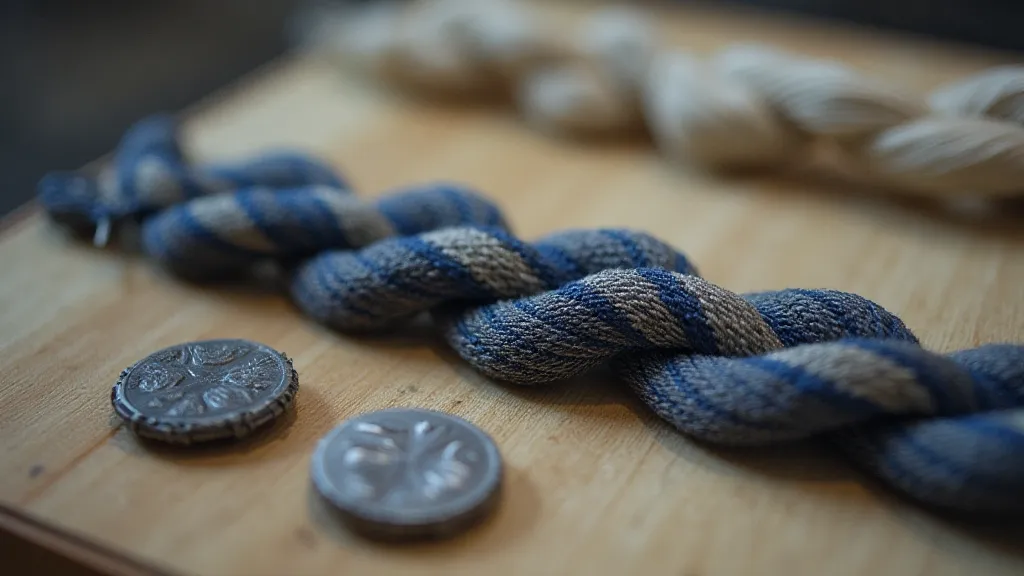
Restoration, Collecting, and the Responsibility of Preservation
For those of us drawn to the beauty and history of Kumihimo, the responsibility of preservation becomes paramount. Antique cords are fragile, susceptible to fading, fraying, and damage from insects and environmental factors. Restoration, when necessary, requires a delicate touch and a deep understanding of the materials and techniques involved.
Collectors often face the challenge of authenticating their pieces. The market is unfortunately susceptible to forgeries, and distinguishing a genuine antique from a modern reproduction can be difficult. Careful examination of the materials – the type of silk or cotton used, the quality of the dyes – is essential. Consulting with experienced Kumihimo experts can also provide valuable insights.
Beyond mere collecting, the true value lies in understanding the cultural significance of these artifacts. Learning the history of Kumihimo, appreciating the artistry of the original artisans, and sharing this knowledge with others – this is how we ensure that the stories woven into these beautiful cords continue to be told.
The Enduring Magic of the Thread
The possibility that Kumihimo patterns once conveyed hidden meanings, family histories, or secret messages is a testament to the remarkable ingenuity and artistry of the Japanese people. It’s a reminder that even the most seemingly simple crafts can hold profound cultural significance. To hold an antique Kumihimo cord in your hands is to connect with a tradition spanning centuries, to feel the echo of the past resonating within the intricate weave.
Even as modern Kumihimo techniques evolve and new applications emerge – from jewelry making to contemporary textile art – the core principles remain the same: precision, patience, and a deep respect for the enduring magic of the thread. It’s a craft that invites us to slow down, to appreciate the beauty of detail, and to listen closely to the silent stories woven within the coils of the braid.
